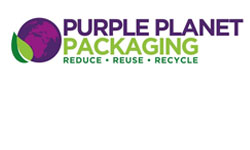David said the legal battle could take up to two years to resolve, while Trump has alternative ways to impose tariffs during this period, with many – including those on steel, aluminium and car parts – remaining in place.
He said: “There are several points businesses need to bear in mind despite the headlines. The first being that this changes nothing immediately.
“All existing tariffs remain in place while Trump appeals the decision. This includes the 25% Section 232 tariffs on steel, aluminium, and auto imports, which were unaffected by the court ruling anyway, and the 10% baseline and higher reciprocal tariffs, which could return depending on the outcome of the appeal.
“The ruling will shift Trump's tariff strategy rather than end it. Section 232 investigations, which are being used to impose tariffs by classifying imports as threats to national security, are proceeding rapidly across multiple sectors, alongside existing categories which remain fully operational.”
Active Section 232 investigations include processed critical minerals and derivative products; commercial aircraft, jet engines, and parts; pharmaceuticals and pharmaceutical ingredients; and semiconductors and related products.
Tariffs imposed under the International Emergency Economic Powers Act (IEEPA) blocked by the court include universal 10% tariffs on most countries; "Liberation Day" reciprocal tariffs (11-84% rates); and Anti-fentanyl tariffs on China, Mexico, and Canada.
David said the Section 232 tariffs offer a stronger legal foundation over IEEPA-backed tariffs as courts rarely overturn national security determinations.
“It’s going to be incredibly important to monitor the Section 232 investigation announcements moving forward,” David said.
“It’s no longer just the US and UK policy announcements that firms need to be engaging with, it’s the ongoing legal developments which will have an enormous bearing on the viability of trade in the US in the short and long term.
“We are also advising clients to audit their tariff exposure across all product lines, bearing in mind how the US may classify products differently, review supply chain documentation for origin verification, and assess currency hedging needs given dollar volatility.
“The bottom line is generic advice cannot substitute for detailed analysis of specific products, supply chains, and tariff classifications. The complexity requires professional assessment of the situation.
“The next stop is the US Court of Appeals with a potential Supreme Court review if appealed further. But it will remain possible to reinstate emergency tariffs during appeals, so we can expect plenty of twists and turns throughout the process, which could take between 12 and 24 months.”
The potential outcomes range from a successful appeal where the court ruling is overturned and the IEEPA tariffs are reinstated alongside existing Section 232 duties, an upheld ruling where Section 232 becomes the primary tariff mechanism, requiring sector-by-sector investigations, or a partial restoration where some IEEPA authority survives, but with narrower scope than originally claimed.


























